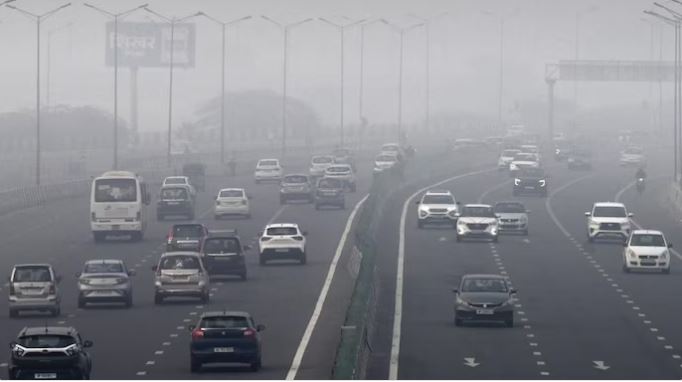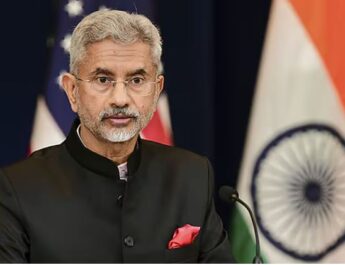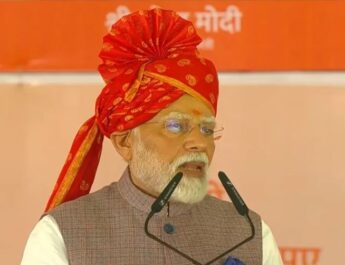New Delhi: The capital city of India, Delhi, experiences a persistent air pollution crisis annually. With a population nearing 20 million, the city struggles with significant pollution levels, particularly during the winter season. This seasonal challenge poses serious risks to respiratory health. Following the Diwali festival, the dynamics of air quality index (AQI) components have notably changed. The levels of PM 2.5, PM 10, O3, NO2, SO2, and CO have displayed a fluctuating trend of escalating pollution. The Central Pollution Control Board (CPCB) indicates that air quality monitoring stations are reporting hazardous conditions, with locations such as RK Puram, Siri Fort, IGI Airport, Nehru Nagar, Okhla Phase 2, and Mandir Marg consistently measuring AQI levels exceeding 450, which is classified as severe and detrimental to health.
The past ten days in Delhi have been marked by extremely toxic air, with rising concentrations of PM 2.5, PM 10, O3, NO2, SO2, and CO, as illustrated in the accompanying graph. The geographical characteristics of Delhi during winter, including descending winds caused by cold high-pressure systems, contribute to the accumulation of pollution. Furthermore, unregulated stubble burning in the National Capital Region (NCR), emissions from vehicles, uncontrolled markets, and the use of firecrackers intensify the situation.
Air, an essential component for life, is tainted by both natural and human-made sources. This pollution not only jeopardizes individual health—particularly for vulnerable populations such as children, the elderly, and those with pre-existing health conditions—but also imposes a financial burden on the government due to increased healthcare expenses. Additionally, this scenario highlights a collective failure in governance, technological infrastructure, and scientific research.
Despite various measures taken by the Delhi government, such as the Graded Response Action Plan (GRAP), pollution hotspot management, winter action plans, public health advisories, and the ban on single-use plastic, these efforts have not yielded significant results. Instead, pollution levels have worsened, making Delhi one of the most polluted cities in both India and the world.
Causes of Air Pollution in Delhi
- Vehicles: Delhi’s roads are filled with millions of vehicles, including cars, buses, and trucks, all of which contribute to air pollution. These vehicles release large amounts of nitrogen oxides (NOx), carbon monoxide (CO), and particulate matter (PM), which are hazardous to respiratory health.
- Industrial Waste: As the capital city, Delhi has numerous industries that contribute to both air and water pollution. The pollution in the Yamuna River is a prime example of industrial waste contamination.
- Construction: Continuous construction activity in the city results in dust and particulate matter (PM2.5), which worsen air quality.
- Festivals and Weddings: During festivals like Diwali and wedding season, the burning of firecrackers significantly increases pollution levels, especially in the winter months.
- Crop Burning: Neighboring agricultural states like Punjab and Haryana engage in crop residue burning during the winter season, releasing vast amounts of smoke and particulate matter that travel into Delhi, further exacerbating the pollution crisis.
Impact of Air Pollution
- Reduced Life Expectancy: Studies suggest that people living in Delhi may lose 5 to 6 years of their life expectancy due to prolonged exposure to hazardous air quality.
- Respiratory Diseases: Long-term exposure to polluted air leads to respiratory problems, weakened immunity, and an increased risk of heart and lung diseases. Research has shown that even newborns in Delhi have blackened lungs due to exposure to polluted air.
- Environmental Damage: The pollution causes widespread damage to biodiversity, reduces crop yields, and contributes to the global climate crisis by emitting greenhouse gases like carbon dioxide (CO2).
AQI and Pollution Levels
The Air Quality Index (AQI) categorizes air quality into different levels:
0-50: Good
51-100: Satisfactory
101-200: Moderate
201-300: Poor
301-400: Very Poor
401-450: Severe
Above 450: Severe Plus (Hazardous)
Currently, many parts of Delhi are seeing AQI levels consistently in the “severe” or “severe-plus” categories. The air pollution crisis in Delhi is a serious and ongoing issue. To protect themselves, individuals should wear masks, limit outdoor activities, stay indoors when pollution levels are high, use public transport, and invest in air purifiers for their homes. Citizens must adhere to government guidelines and actively participate in finding long-term solutions to the pollution problem. The government, along with citizens, must work collectively to address this environmental challenge to safeguard public health and the future of the city.




